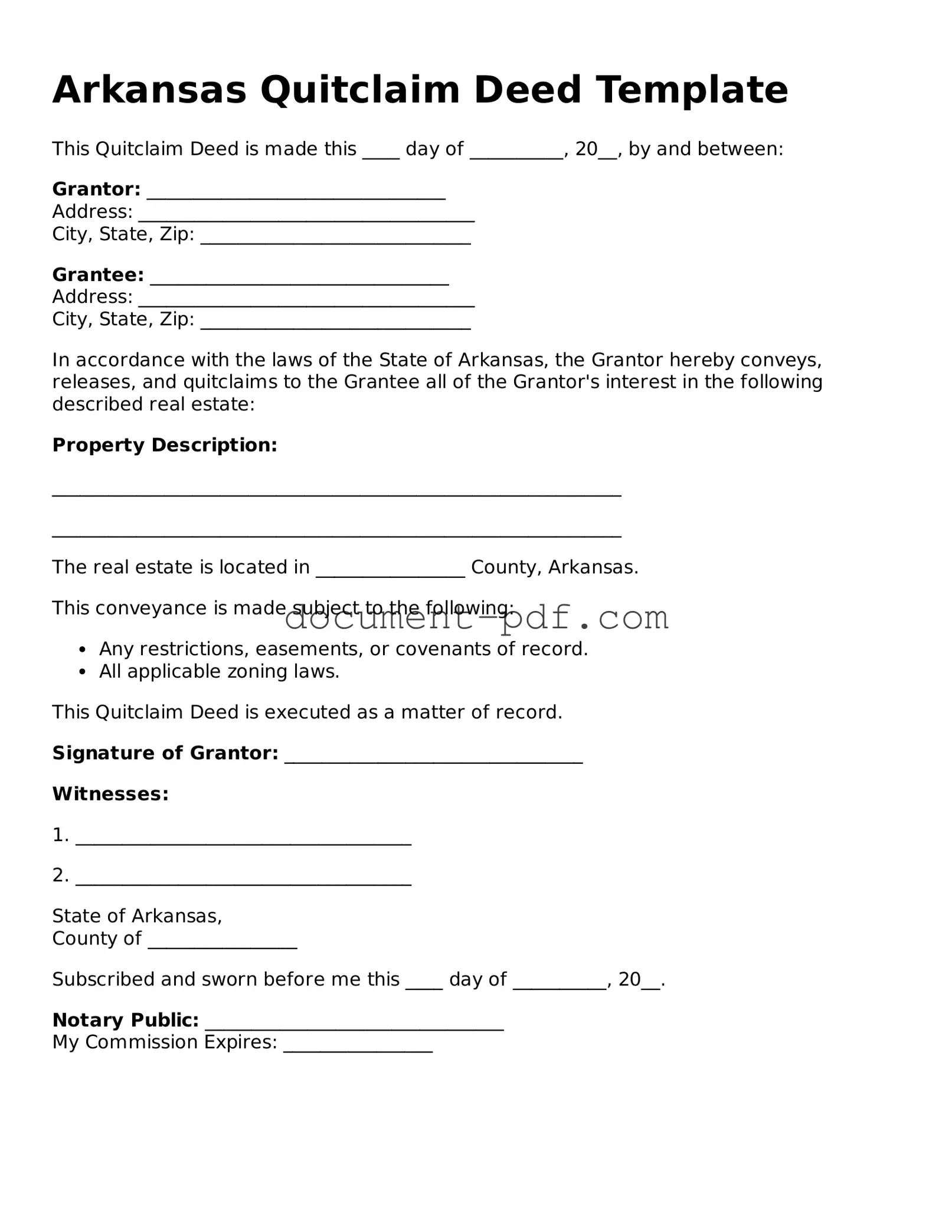Arkansas Quitclaim Deed Template
This Quitclaim Deed is made this ____ day of __________, 20__, by and between:
Grantor: ________________________________
Address: ____________________________________
City, State, Zip: _____________________________
Grantee: ________________________________
Address: ____________________________________
City, State, Zip: _____________________________
In accordance with the laws of the State of Arkansas, the Grantor hereby conveys, releases, and quitclaims to the Grantee all of the Grantor's interest in the following described real estate:
Property Description:
_____________________________________________________________
_____________________________________________________________
The real estate is located in ________________ County, Arkansas.
This conveyance is made subject to the following:
- Any restrictions, easements, or covenants of record.
- All applicable zoning laws.
This Quitclaim Deed is executed as a matter of record.
Signature of Grantor: ________________________________
Witnesses:
1. ____________________________________
2. ____________________________________
State of Arkansas,
County of ________________
Subscribed and sworn before me this ____ day of __________, 20__.
Notary Public: ________________________________
My Commission Expires: ________________
